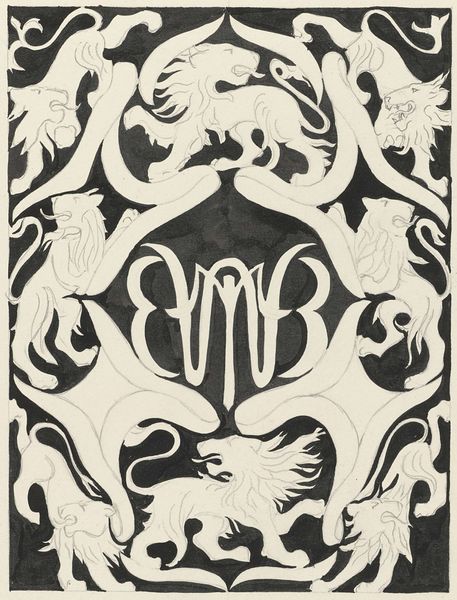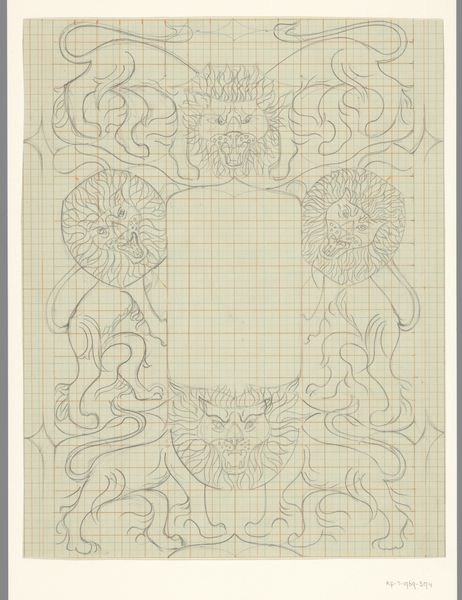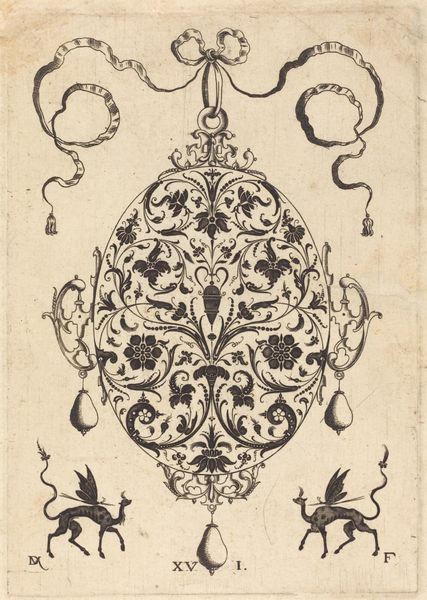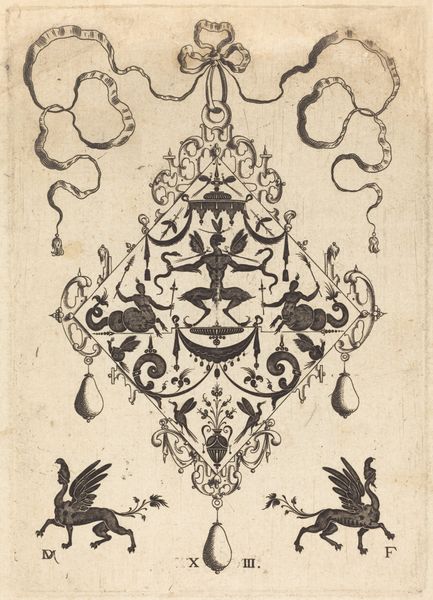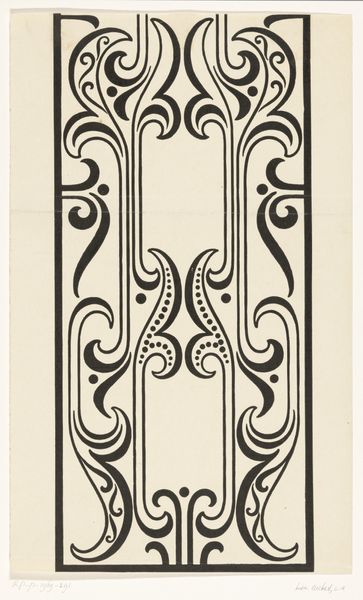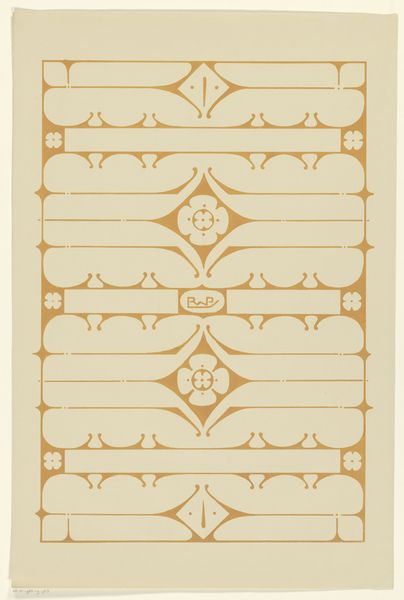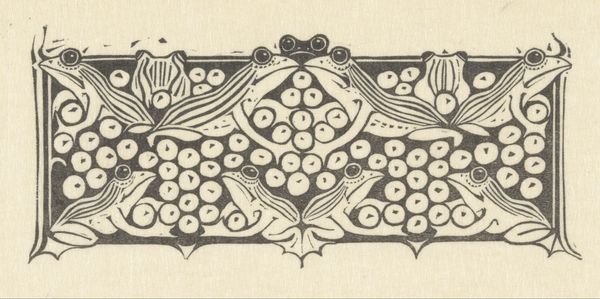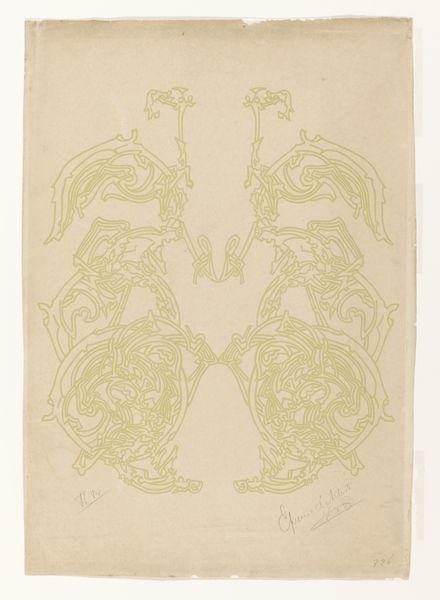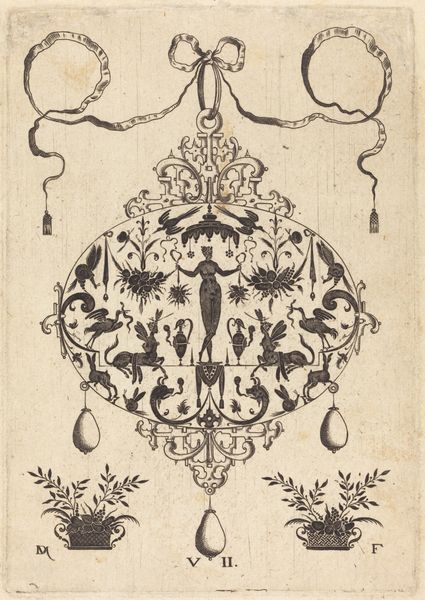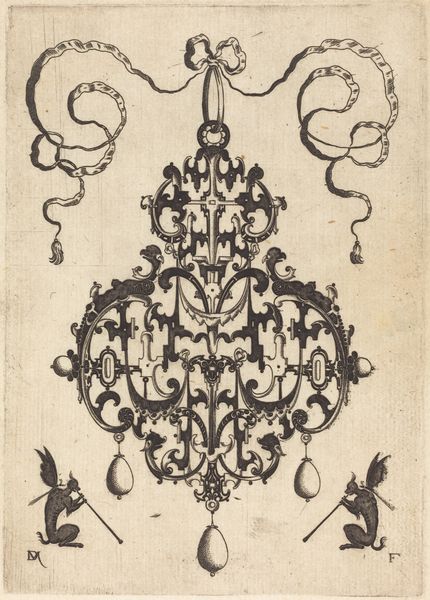
Dimensions: height 343 mm, width 242 mm
Copyright: Rijks Museum: Open Domain
Editor: Here we have Carel Lion Cachet's "Design for the bookplate of Carel Lion Cachet" from 1941, combining drawing, typography, and linocut print. It's all in black ink and has a distinctly heraldic feel. What stands out to you about this piece? Curator: I see a clear example of the blurring of lines between craft and art, particularly during wartime. Here we have Lion Cachet, an artist engaging with printmaking, traditionally considered a more "lowbrow" medium, to create a personal object - an ex libris. Editor: Interesting, I never considered it "lowbrow." Curator: Well, compare it to painting or sculpture at the time, right? What were the conditions under which this piece was made? It’s 1941, under Nazi occupation, so material access was undoubtedly restricted. Ink and linoleum were probably more readily available than canvas and oils, pushing artists to find creative outlets within the means available. Editor: That makes sense. Were such practical factors commonly considered by artists at the time? Curator: Absolutely! Art isn’t created in a vacuum. Restrictions, whether material or political, always shape production. This design itself seems to echo that sentiment through its militaristic emblem and fierce animal visages, paired with the resolute expression, "My shield and trust." Editor: So you are saying the constraints actually shaped his artistic choices? Curator: Precisely! The availability of materials and the prevailing social context can challenge the perceived hierarchy between high art and functional design. It also opens questions about the labor involved: how many prints were made, for whom, and what statement did possessing such a bookplate make? Editor: So, the act of making and circulating this print during that specific historical context becomes the real point. Curator: Exactly! Material constraints became catalysts for creative expression. Thinking this way gives us a richer understanding. Editor: That really reframes how I view this piece. It's less about just the image, but more about its production and social function. Thanks!
Comments
No comments
Be the first to comment and join the conversation on the ultimate creative platform.

